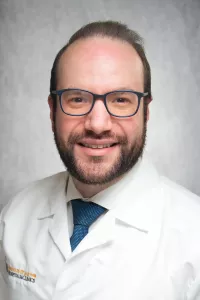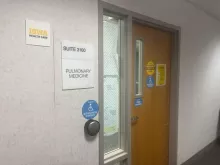Smoking Cessation
- For all other requests:
- 1-800-777-8442
If you smoke, vape, or use smokeless tobacco, you know that nicotine is extremely addictive—physically, emotionally, and behaviorally.
That can make quitting on your own difficult, even when you know that quitting reduces your risk of developing:
- COPD
- Emphysema
- Lung cancer and many other cancers
- Heart disease
- Stroke
- Diabetes
No matter how long you've used tobacco or how much you use, quitting now will be good for your health.
University of Iowa Health Care experts offer proven techniques, medications, and support that can help.
You may need to try a few approaches to find the one that works for you. We'll be with you every step of the way.
How to quit smoking
Quitting tobacco abruptly, or “going cold turkey,” is often the first approach people try. Some can successfully quit this way. But about 95% of people go back to using tobacco after six months.
We also know there’s no one foolproof way to quit smoking. That’s why we’ll work with you to customize a plan to help you quit for good. Whatever your schedule, wherever you live, there’s an approach that will work for you.
Talk with your primary care provider or pulmonologist for a referral—and ask them whether you’re eligible for lung cancer screening.
To give you the best chance of success, we offer a number of options. They’ve all been proven to help people quit using tobacco. Most people succeed with a combination of different methods.
Counseling and support
Quitting tobacco means addressing both your physical addiction to nicotine and your psychological dependence on it.
We can help you change your behavior around tobacco use.
-
UI Holden Comprehensive Cancer Center has a tobacco treatment program staffed by a certified tobacco treatment specialist.
-
Our pulmonary rehabilitation team has years of experience helping people quit successfully.
-
We can connect you with Quitline Iowa, a free phone and online program. You get professional coaching, a support community, and a free starter pack of nicotine replacement therapy (NRT).
Your team will help you identify your triggers for using tobacco and show you how to manage them without smoking. If you smoke to reduce stress or control your weight, you’ll learn other strategies that work.
Nicotine replacement therapy
NRT provides substitute sources of nicotine that can reduce cravings and withdrawal symptoms. Available without a prescription, these include:
-
Nicotine gum
-
Nicotine inhaler
-
Nicotine lozenge
-
Nicotine nasal spray
-
Nicotine patch
You can start using NRT a week or two before you quit. This will help you cut down your tobacco use and prepare to quit successfully.
Combining one or more NRT methods can help you quit more effectively than using a single method.
For example, a nicotine patch releases a steady level of nicotine throughout the day. If you get a craving while using a patch, a fast-acting product like nicotine gum can get it under control.
Prescription medication
Your pulmonologist or primary care provider can also prescribe medication to help you quit tobacco. Medication therapy usually lasts eight to 12 weeks, but some people may benefit from a longer treatment plan.
The following don’t contain nicotine but work on your brain chemistry instead.
-
Chantix (varenicline) helps reduce nicotine cravings and withdrawal.
-
Zyban (bupropion HCI) helps reduce your urge to use tobacco.
Our Care Team




- Lung Services
Are you ready to quit smoking?
Locations and Offices


